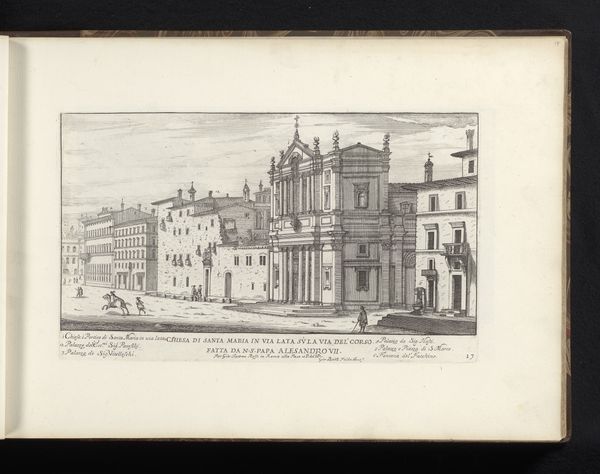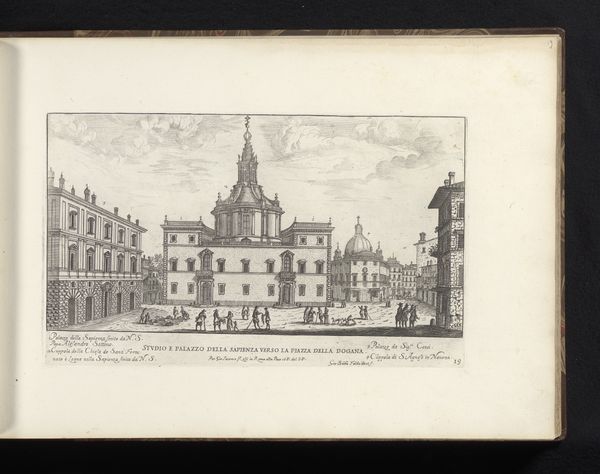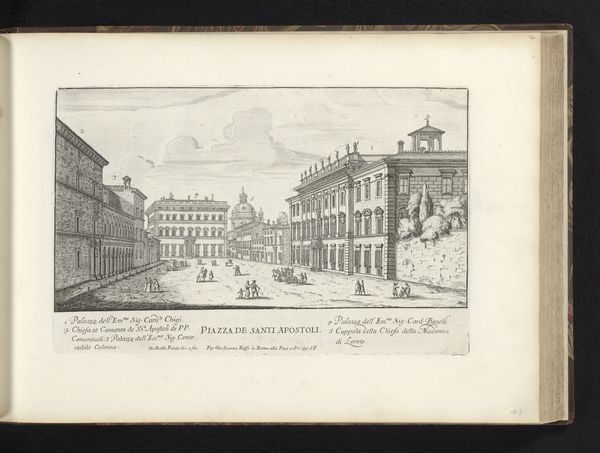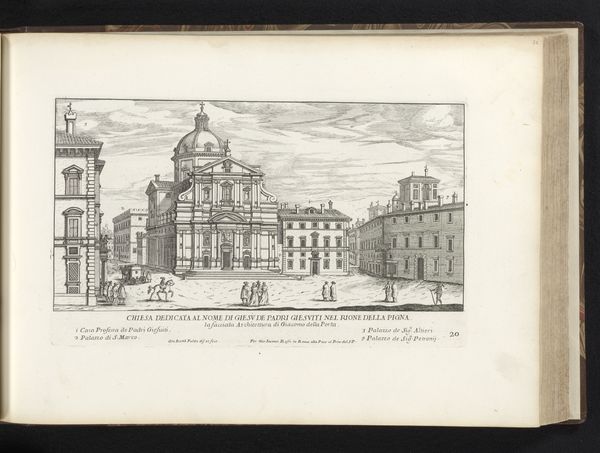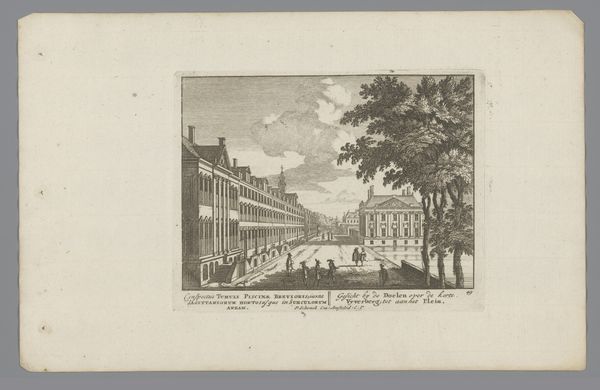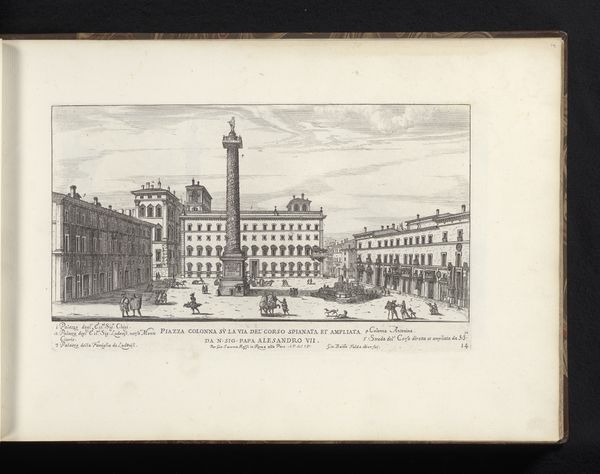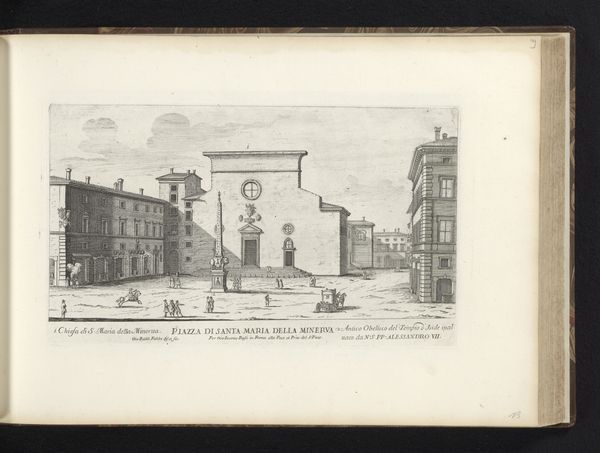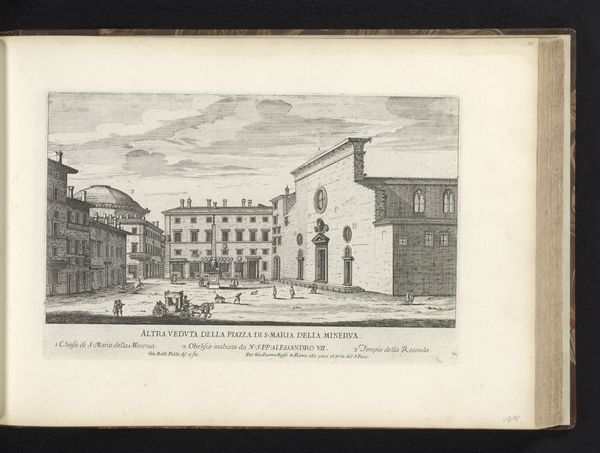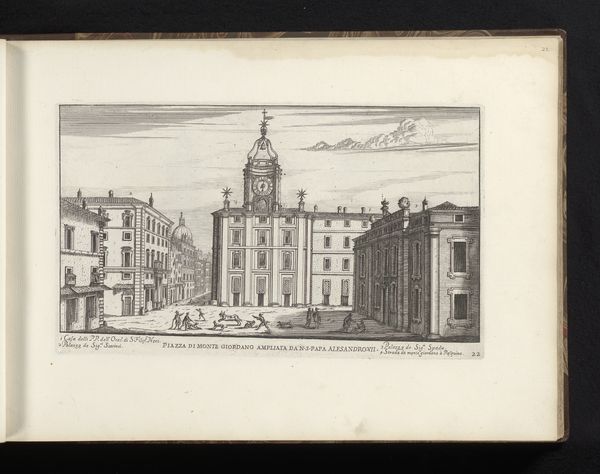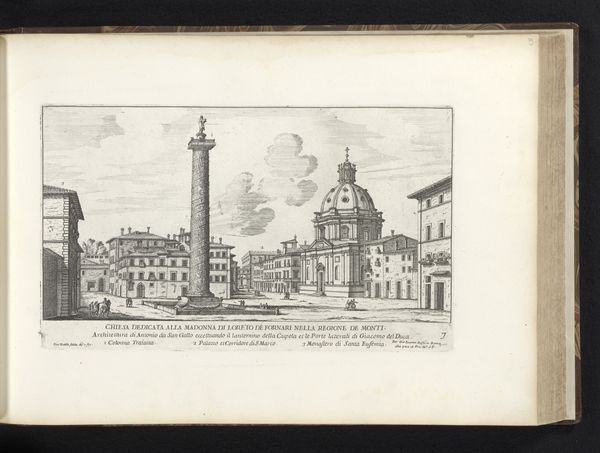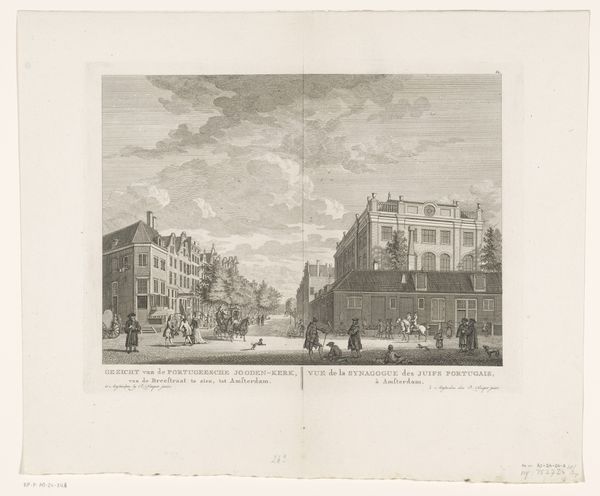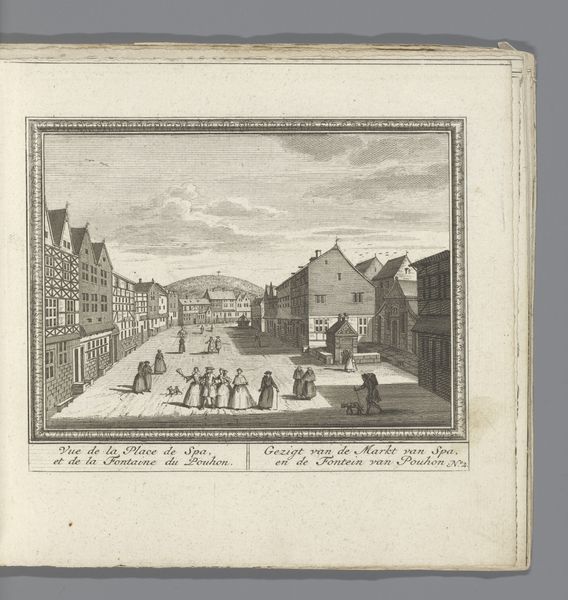
drawing, print, engraving, architecture
#
drawing
#
baroque
# print
#
cityscape
#
italian-renaissance
#
engraving
#
architecture
Dimensions: height 170 mm, width 287 mm
Copyright: Rijks Museum: Open Domain
Curator: Giovanni Battista Falda’s print, "Piazza di Santa Maria in Trastevere in Rome", dates back to 1665. It's currently held at the Rijksmuseum. What strikes you first about this piece? Editor: The incredible detail, honestly. It’s meticulously engraved, almost architectural in its precision, but with an interesting dynamic from the human activity. I imagine it was a labor-intensive process, creating such a clear and reproducible image. Curator: Indeed. Falda was known for documenting the urban landscape of Rome. This print shows how public spaces like the Piazza were being shaped and presented during the Baroque period, and how Papal power sought to impress through urban design. The focus isn't just the religious structure itself. It’s about the surrounding space and how it functioned. Editor: Exactly, and the arrangement seems staged, almost like an early form of propaganda using this piazza as a set. Considering that engravings are fundamentally about reproduction, and the circulation of images, I wonder how Falda thought this space should be experienced versus its actual use. It speaks to the growing importance of printed media and shaping the public image of a city, not to mention how this piece immortalizes the engraver’s laborious skill. Curator: Good point. It reflects an idealized vision. Prints like these also become crucial historical records, don't they? The built environment shifts so rapidly, this type of document allows us to reflect on past aesthetic and social ideals, and who benefited from those. Editor: Yes, this allows the consumer of art a snapshot into the labor involved. A clear perspective of both process and materiality. But considering the time it would take, the paper used, I have to consider this an art piece that may be slightly propagandist. The arrangement here speaks to so much intention of craft, consumerism and ideals. Curator: So, an intricate portrayal entangled with complex meanings about production and societal power? I think we can both agree on that. Editor: Absolutely, each line a testament to both artistry and deliberate social engineering. Fascinating.
Comments
No comments
Be the first to comment and join the conversation on the ultimate creative platform.
